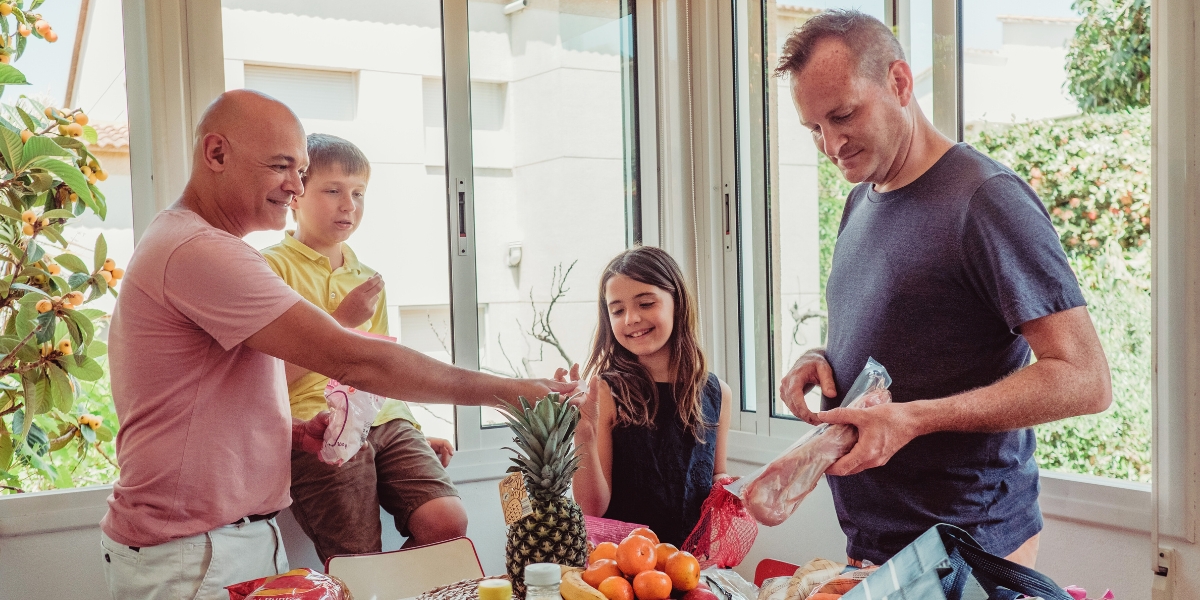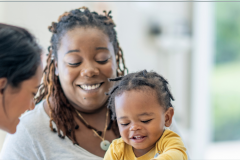
A new study led by Dr. Lianne Soller and Dr. Edmond Chan, published in Clinical & Experimental Allergy, explores how oral immunotherapy (OIT) — a well-established treatment that helps children build tolerance to allergenic foods — can ease the emotional and psychological strain experienced by parents and caregivers. The study focused on preschool-aged children, a group shown to respond especially well to OIT, and found that the treatment was associated with reduced parental anxiety and improved quality of life.
We sat down with Dr. Soller — research manager with the Division of Allergy in the Department of Pediatrics at the University of British Columbia (UBC) and program manager at the Food Allergy Immunotherapy Program at BC Children’s Hospital Research Institute (BCCHR) — to learn how OIT is helping families feel more secure, empowered, and supported as they navigate life with food allergies.
What is oral immunotherapy, or OIT, and how does it work?
Oral immunotherapy is a treatment for food allergies that involves giving a child very small, carefully measured amounts of the food they’re allergic to — like peanuts — and gradually increasing that amount over time. The idea is to help the body become more tolerant so that accidental exposures don’t cause severe reactions.
Treatment usually starts with a tiny dose, given by mouth, and builds up over several months. Once the child reaches a “maintenance dose,” they continue taking that amount daily for about a year — sometimes longer. It’s a slow and careful process, and it’s been shown to be safe and effective.
Your research focused on preschool-aged children. Why that age group?
We know from previous studies that OIT tends to be safer in younger children. They experience fewer reactions compared to older children and adolescents. We’re not exactly sure why, but it may be because the immune system isn’t fully developed until around age five.
Also, it can be harder to introduce a certain food to a child who’s been told for years that they can’t have it. Starting earlier may help reduce fear or aversion and prevent some of the longer-term challenges that can come from food allergy as kids grow up.

What are some of the biggest challenges parents and caregivers face when managing a child’s food allergy?
The biggest one is usually the trauma of the first reaction. Parents and caregivers are often feeding their baby a new type of food, and then all of a sudden their baby starts having symptoms — sometimes serious ones like anaphylaxis. That can be terrifying, especially if they need to call an ambulance and don’t have an epinephrine autoinjector on hand.
After that, the diagnosis itself can feel defeating. There’s so much media coverage about how dangerous food allergies can be, and that fear stays with families. Over time, there are new worries at every stage — starting daycare, going to school, attending birthday parties, or eating food prepared by others in any setting. It’s a lot for parents and caregivers to carry, and that’s one of the things we’re trying to ease with OIT.
Before your study, what did we know about how OIT affects anxiety and quality of life?
There had been a few studies, but anxiety and quality of life weren’t often prioritized as outcomes in food allergy research. Some studies showed improvement, others didn’t — and many looked at older children or adults, so it was hard to draw clear conclusions.
Clinicians had been hearing really positive feedback anecdotally. For example, parents and caregivers saying, “I feel like a huge weight has lifted,” or “I’m not constantly worrying anymore” — but we didn’t have the data to back that up.
At BC Children’s, we developed a new anxiety measurement tool specific to food allergy and started using it with our OIT parents and caregivers. Even early on, we were seeing that parents felt better, sometimes just by starting the process. That sense that something was finally happening gave them relief. Now we have clear evidence to show that yes, anxiety does go down for these parents.

Can you share more about what your study found?
We measured two main outcomes: anxiety and quality of life. We found that anxiety decreased from the time families started treatment to when they reached the maintenance phase — the part where the child is taking a stable daily dose.
That’s a really meaningful change because the buildup phase is actually the most challenging — parents are worried their child might react to a new dose. But even during that time, we saw a drop in anxiety. We also continued to monitor families at their check-in visits, every six to 12 months, and saw that the improvement was sustained.
Quality of life also improved, which other studies have shown, too — but the anxiety data is especially important because it hasn’t been studied much in this context.
Your study found that parents and caregivers of children receiving partial OIT reported greater improvements than those doing complete OIT. What does that mean?
Partial OIT involves treating only some of the foods a child is allergic to. For example, just peanuts instead of peanuts, tree nuts, and sesame. Complete OIT involves treating all of them.
We were surprised by this finding. We actually thought complete OIT would lead to greater improvements in anxiety, since more allergens were being addressed. But our guess is that partial OIT may have felt more manageable for some families. Preparing multiple doses every day takes time and commitment, so it may have felt like less of a burden when fewer foods were involved.
How might your research influence how OIT is offered or how we support families going through it?
We’ve already seen it making a difference. When I shared the study online, an allergist in the United States said she printed it out and brought it to her colleagues to show why she offers OIT. To her and to so many other allergists, it’s not just about reducing reactions. It’s about supporting families, too.
I also think this helps reduce the stigma around parental anxiety. A lot of parents feel like they’re the only ones worrying, but our data shows that anxiety about a child’s food allergy is really common. They’re far from being alone.

What advice would you give to parents and caregivers who are considering OIT for their child?
Oral immunotherapy is not for everyone and that’s okay. Some parents are scared, some don’t have the time, and some kids just don’t want to do it or don’t feel ready yet. In Canada, cost is less of a barrier because in most cases the food used for OIT can be bought at the grocery store, but the time commitment is still significant.
I always recommend talking to a doctor who offers OIT. There are decision aids available to help you weigh your options and figure out what’s right for your family. And avoidance is still a valid option. You’re not doing the wrong thing if you decide that OIT isn’t right for your child.
How does your research help children live their best lives?
Our research program focuses on giving entire families more freedom and opening up their world to new experiences. When kids finish their allergy treatment, many families tell us about the trips they can finally take, the outings they can finally experience together, and all the places they can go — feeling confident, relaxed, and fully present.
Oral immunotherapy isn’t the right choice for everyone, but for the families who choose it, it can be truly life-changing.
*******
This Q&A was inspired by our Best Lives podcast episode titled, “Oral immunotherapy treats kids’ food allergies and reduces parents’ anxiety.”
Are you looking for the latest in pediatric research? Check out our podcast — Best Lives — on Apple Podcasts, Spotify, or wherever you get your podcasts!




